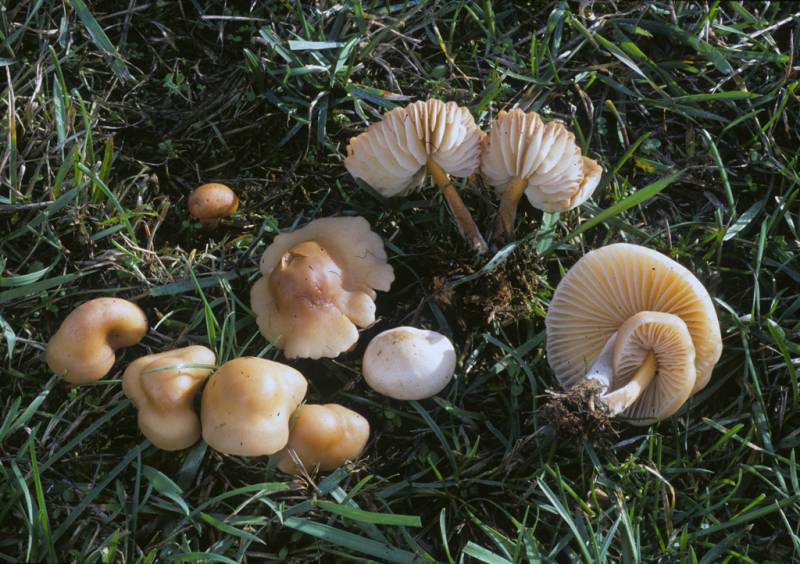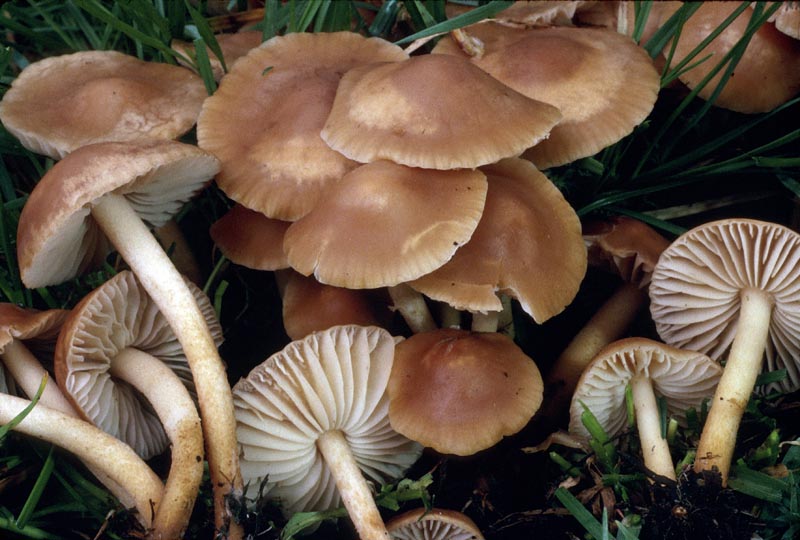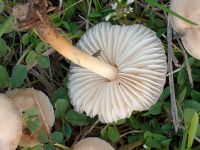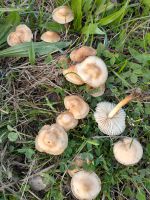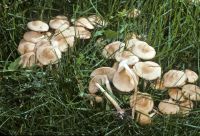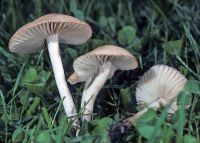Distribution: The most common species in the PNW, M. oreades, occurs in many parts of the world in lawns, parks, pastures, and other grassy areas, where it often grows in arcs or circles known as fairy rings.
Conservation Status: Not of concern
Marasmiuses are generally small, rather tough mushrooms, with mostly convex caps, narrowly attached gills, thin rigid stipes, no veils, and the characteristic of reviving from the dry state when moistened. They are much more common and diverse in eastern North America than they are in the West. Mushrooms with which they can be confused include species of Collybia, Micromphale, Strobilurus, and Marasmiellus; usually microscopic examination is necessary for confident identification. Although a small mushroom, it nonetheless is large, stocky, and fleshy for a marasmius. The cap is light to medium reddish brown, bright tan, or warm buff, with a central umbo, the gills are similar in color, though paler, and are thick and widely spaced, looking a bit like wax-cap gills; they have a faint, but recognizable odor of cyanide. The stipe is similar in color to the cap and rather tough. M. oreades can be found almost any time of year, but is most abundant in warmer weather after rains or where lawns are watered regularly. A somewhat similar poisonous species that occurs in the same habitats and can also form rings is Clitocybe dealbata (Sowerby: Fries) P. Kummer. It is about the same size, but is duller and whiter, has close, narrow decurrent gills, and lacks the pleasant odor. Fairy rings and arcs form as the mycelium of a fungus grows outward from its point of origin, exhausting its food supply as it spreads, forming a ring if soil conditions are relatively uniform and arcs if they are not or if obstructions are present. The growth of the fungus temporarily disrupts the growth of the grass so the rings can be seen as brown areas when the fruitbodies are not present. M. oreades is an excellent edible mushroom, but be sure of your identification and take care not to collect it from places where lawn chemicals have been applied. Most people use only the caps as the stipes are rather tough.
PNW Herbaria: Specimen records of Marasmius oreades in the Consortium of Pacific Northwest Herbaria database
CalPhotos: Marasmius oreades photos

